
Chives are not necessarily the most popular herbs to grow in the garden, but they certainly should be.
They look fantastic, whether in a herb patch or as a stunning edging plant. Their bright purple flowers add a pop of color to any space and the entire plant is quite useful, stem to blossom.
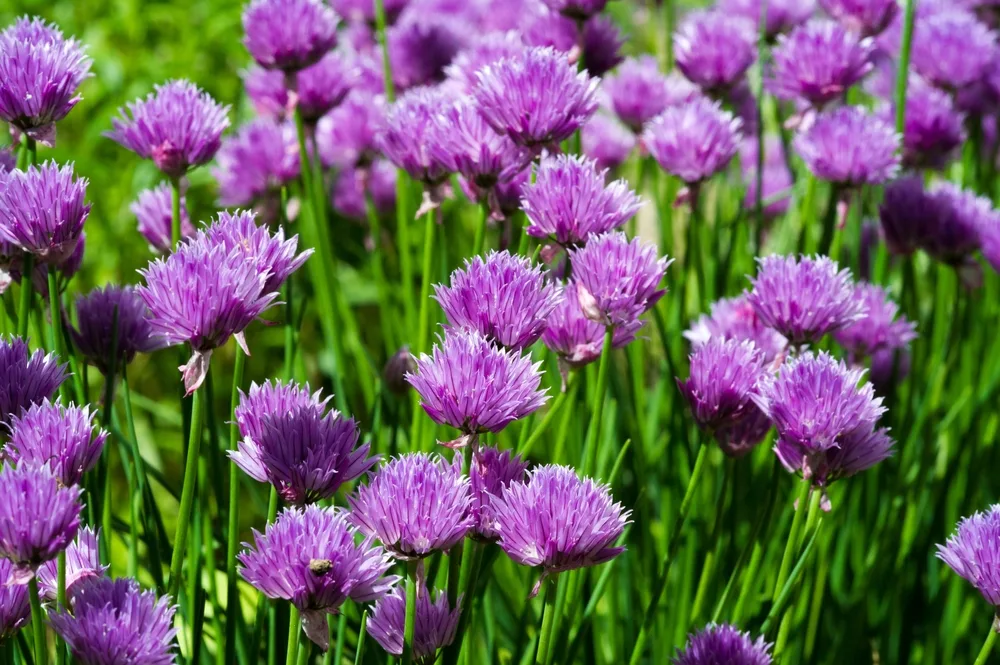
This sun-loving, hardy herb is versatile, with uses from repelling nasty pests to preventing soil erosion and even attracting bees and other beneficial insects.
Chive’s uses go far beyond the garden too. You may be quite surprised to find how you can use the whole plant in your home.
Around the Home…
1. Chives Garden Spray
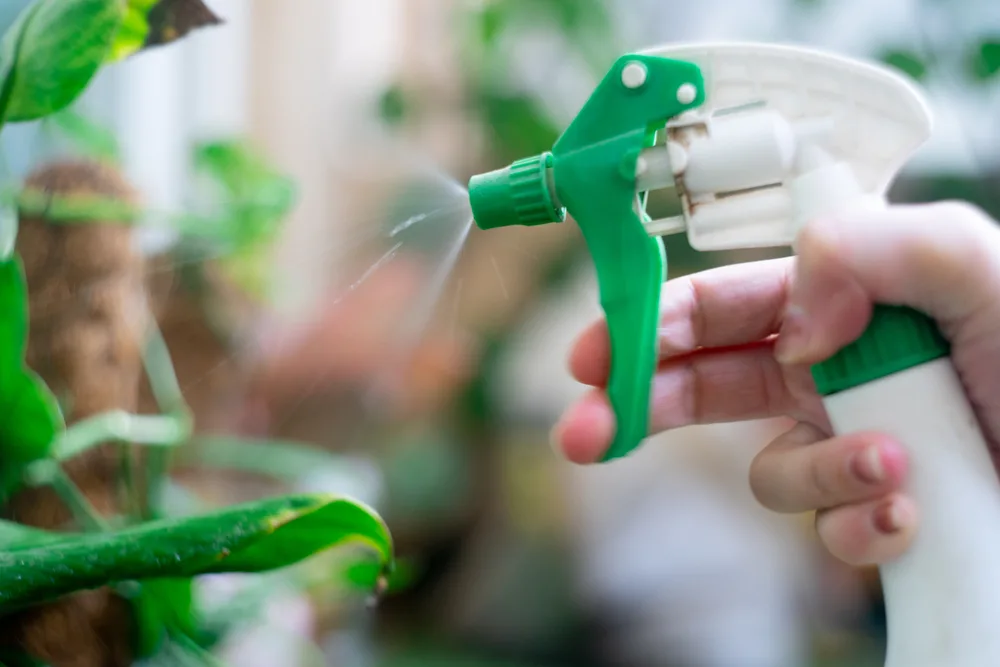
Before we take a step inside, let’s start with a unique use in the garden – disease control.
Chives help prevent some diseases – such as powdery mildew – from taking hold in vulnerable plants, preventing them from destroying some of your favorite garden friends.
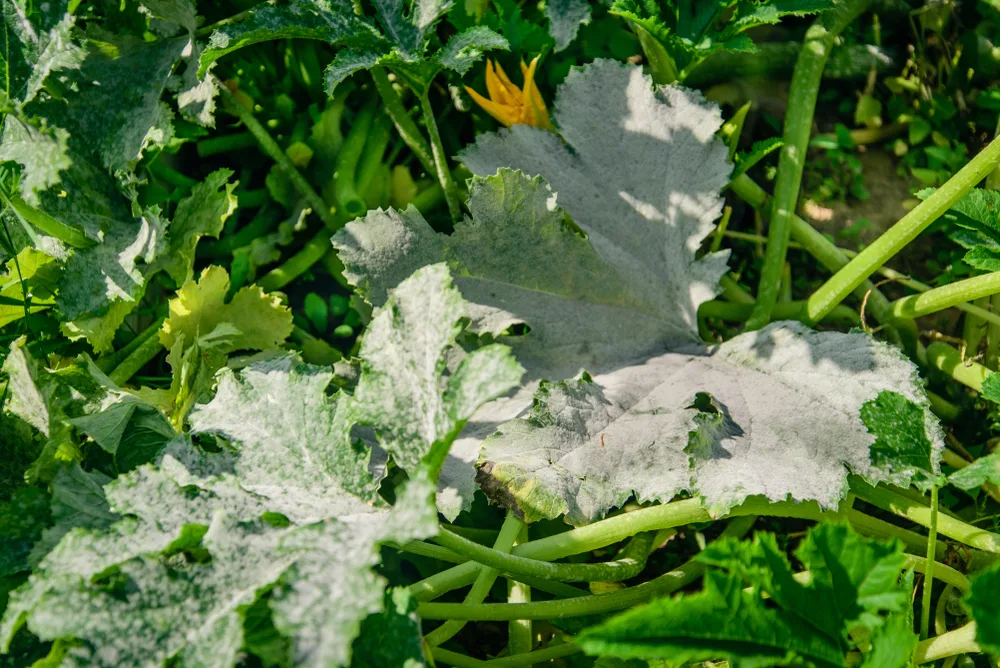
The disease-busting concoction is an easy one to cook up. Chop some chive leaves and add them to a pot of boiling water. Boil for several minutes and once cooled, strain and add the mixture to a spray bottle. Spray your plants with this handy chive liquid to protect your plants.
2. Chive Bouquet
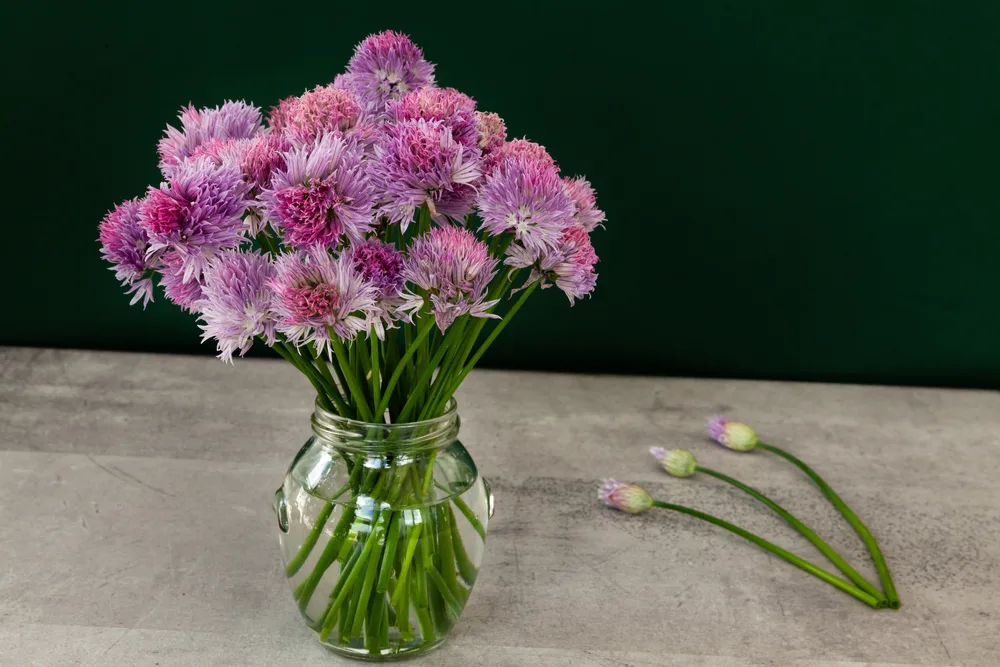
The purple and pink blooms of chive plants are very special. They add pops of color to any space, so it’s no wonder they’re so popular in the garden.
You can bring the same splashes of color into your home by creating a unique chive blossom bouquet. Combine them with other picked garden flowers for a stunning cut flower feature.
For ways to keep fresh cut flowers longer, you’ll want to read 9 Simple Ways to Make Your Fresh Cut Flowers Last Longer
In The Pantry (or fridge)…
3. Chives Sauces and Dressings
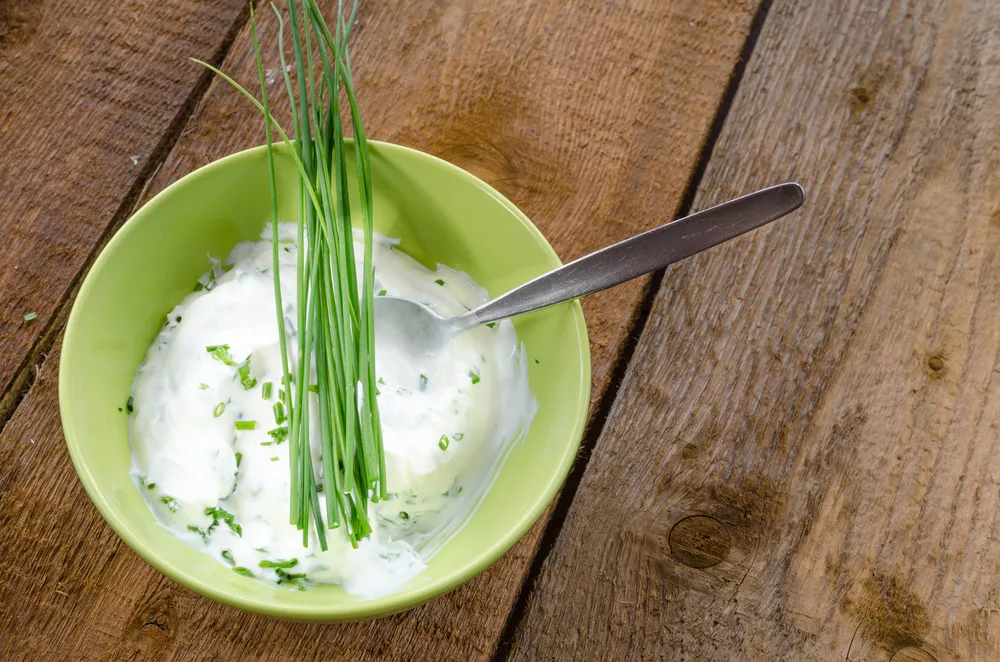
There are several ways to add the unique chive taste to your favorite dishes, one of which is through sauces and dressings.
Pasta is incomplete without a warm, creamy sauce, and the same can be said for a crisp salad with no scrumptious dressing. Throw some chives in the mix and you’ll have a meal guaranteed to dazzle.
Complete a wholesome chicken pasta with creamy garlic and chives. Or cook up a cheesy chive sauce that pairs well with gnocchi.
To top off crispy salads on a hot summer’s day, try out this zesty lemon-chive dressing.
4. Chive Pesto
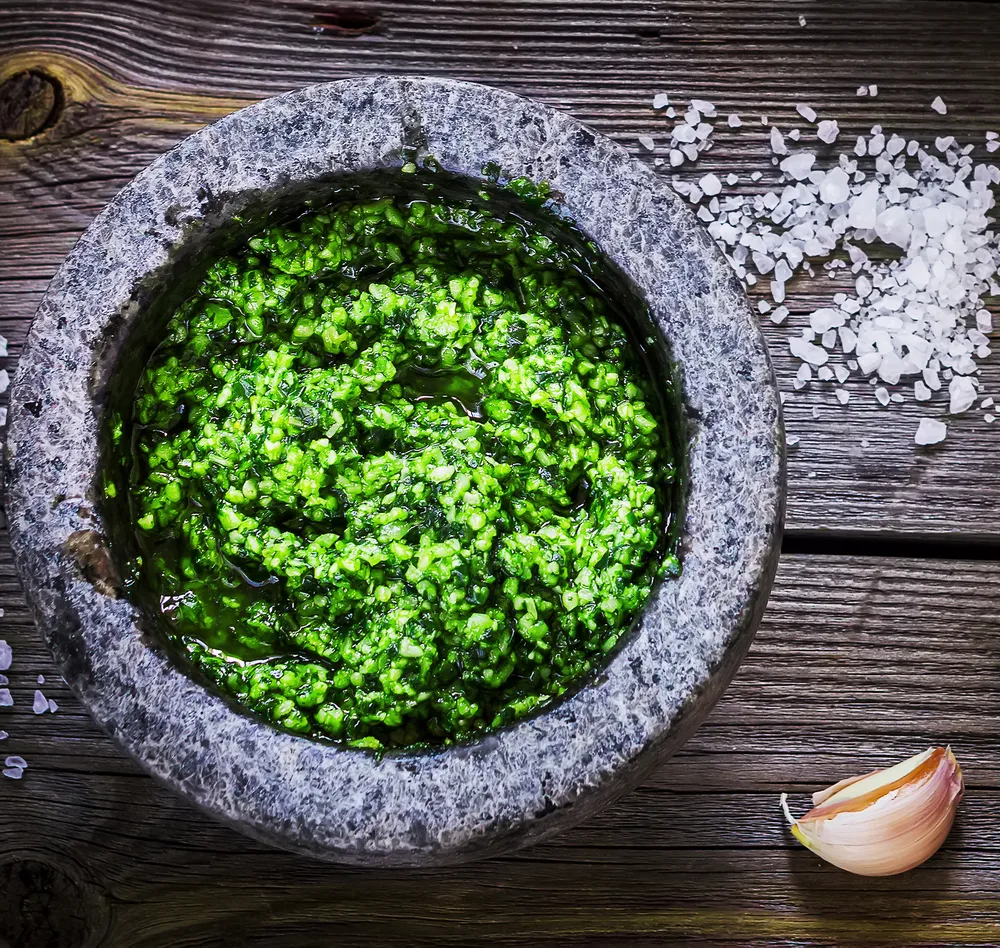
Experimenting in the kitchen is a fun gamble. Sometimes, it turns out to be disastrous, but other times, you end up with unique twists that make your meals a million times better.
A chive pesto is one of those fun twists on a traditional condiment. It’s quick to whip up and doesn’t require a long list of extra ingredients.
You’ll need:
- 1 cup of nuts and seeds of your choice.
- 1 and 1/2 cups of spinach or kale
- ½ cup of freshly chopped chives
- ¼ cup of grated Parmesan
- ½ a cup of olive oil
- A teaspoon of lemon juice
- A dash of salt
Grab all your ingredients (except the parmesan) and toss them into a blender or food processor. Blend until everything is smooth. It could become quite thick – add some more olive oil for a runnier texture.
Next, slowly add your parmesan cheese and continue to blend. If you prefer a chunkier pesto, reduce the amount of oil, or throw in a few more nuts.
Throw your pesto in a jar, pop it in the fridge and eat within three days.
5. Chive Blossom Vinegar
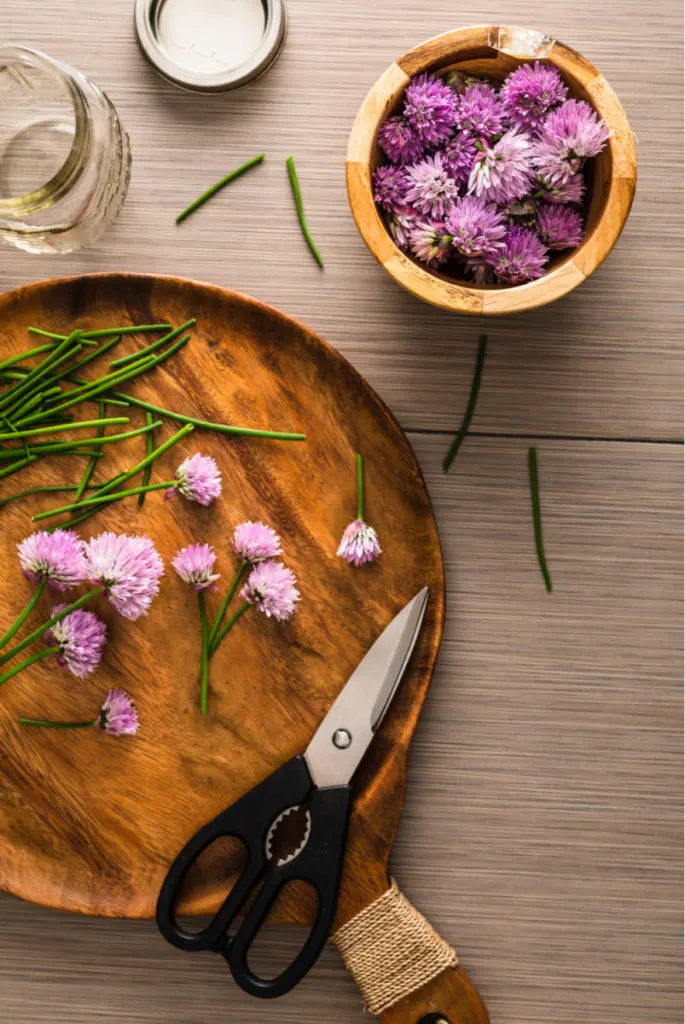
Chive blossoms don’t just look great in floral bouquets. They have a mild onion-like flavor that doesn’t overpower other pairings, making them a great addition to salads or for use in a salad dressing like chive blossom vinegar. It takes almost no time to make and can be used in several ways, including as a marinade.
All you need is:
- 1 cup fresh chive blossoms
- 1 and 1/2 cups of vinegar
First, crush up the chive blossoms to release their delicious oniony scent and flavor. Next, toss them into a clear, sealable jar, and pour the vinegar over the blossoms until they’re completely covered. Stir your mixture well.
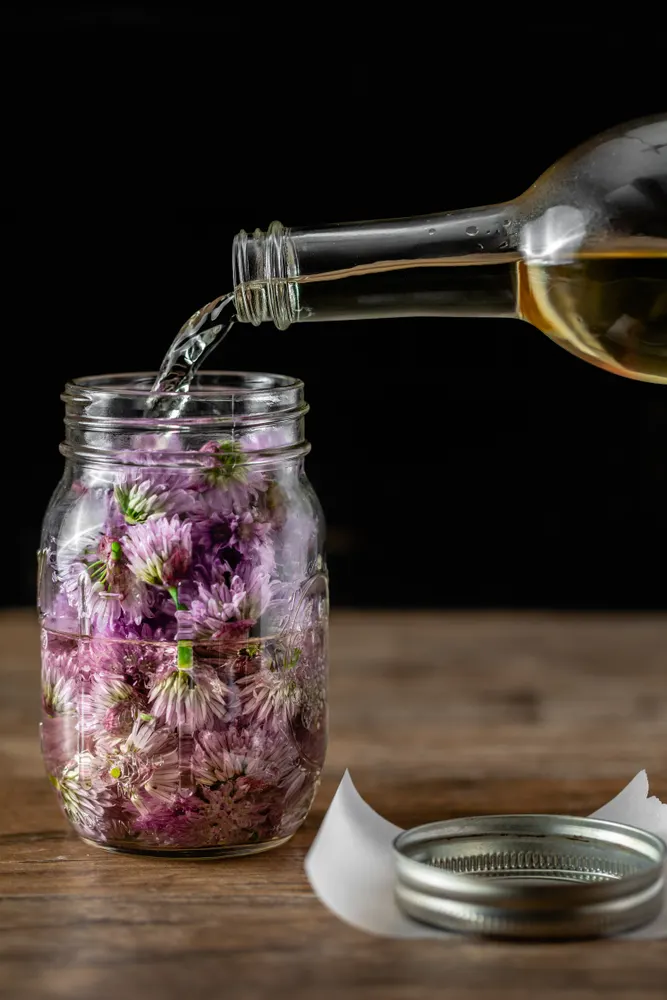
Tightly seal your jar and store it at room temperature in a dark cupboard for about two weeks. Don’t forget to label it with the date.
After two weeks, strain the vinegar into a nice jar or bottle and dispose of the spent chive blossoms. You have an easy, tasty chive-infused vinegar to use in as many dishes as you can think of.
6. Chive Butter
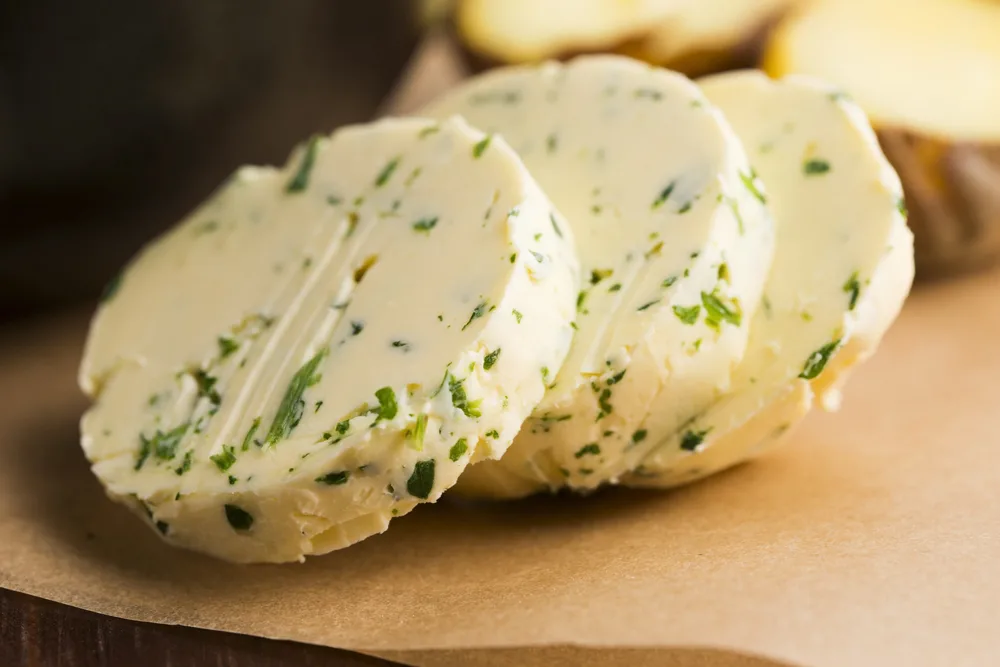
Another simple way of adding hints of chive flavor to meals is through chive butter. This flavored butter can be melted and cooked with, adding creamy, salty hints to whatever you’re frying. Or, use it as a spread for savory biscuits and bread.
Simply grab four sticks of butter and about half a cup of finely chopped fresh chives.
Soften your butter using a potato masher, stand mixer, or even your hands. Mix and mash until the butter is soft enough to easily combine the chives. Keep mashing the butter while slowly adding the chopped chives.
When the chives have been completely mixed into the butter, spread the mixture out onto some parchment paper. Then, tightly roll your chive butter into a nice even cylinder and tie each end. Alternatively, add a spoonful to an ice tray mold and freeze.
Chive butter tastes even better when you make it with your own homemade butter. Click here to learn how to make butter in under 20 minutes.
In The Kitchen…
7. Chives in Salads
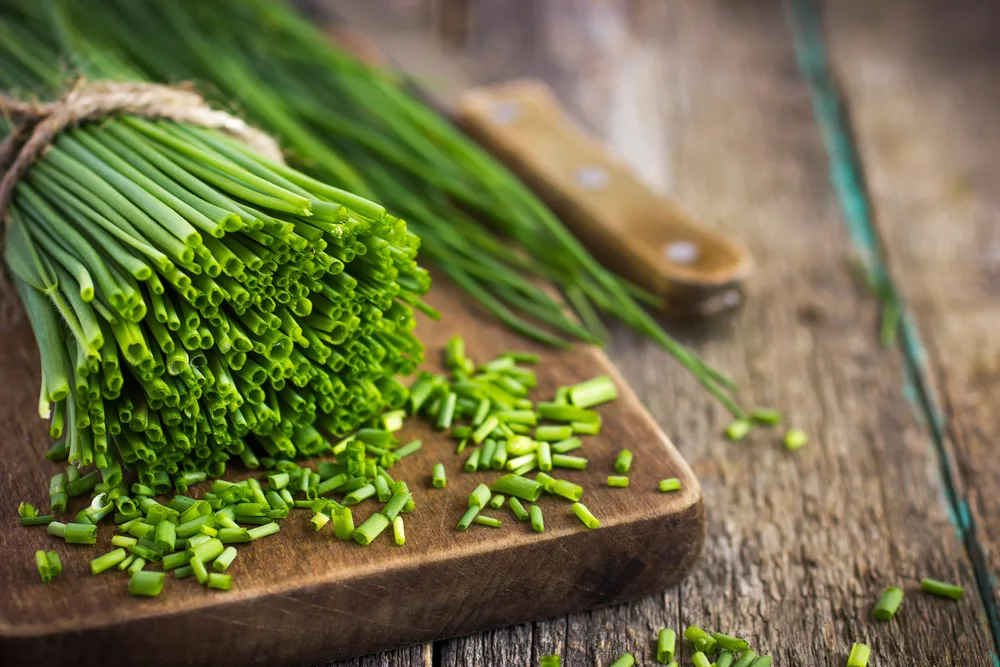
For chive lovers, chive blossom dressing may not pack enough of a punch for your salads. If that’s the case, you can always toss some additional chives directly into your salad for an unbeatable flavor.
For the adventurous home chefs among us, try out this easy Korean chive salad.
8. Baking With Chives
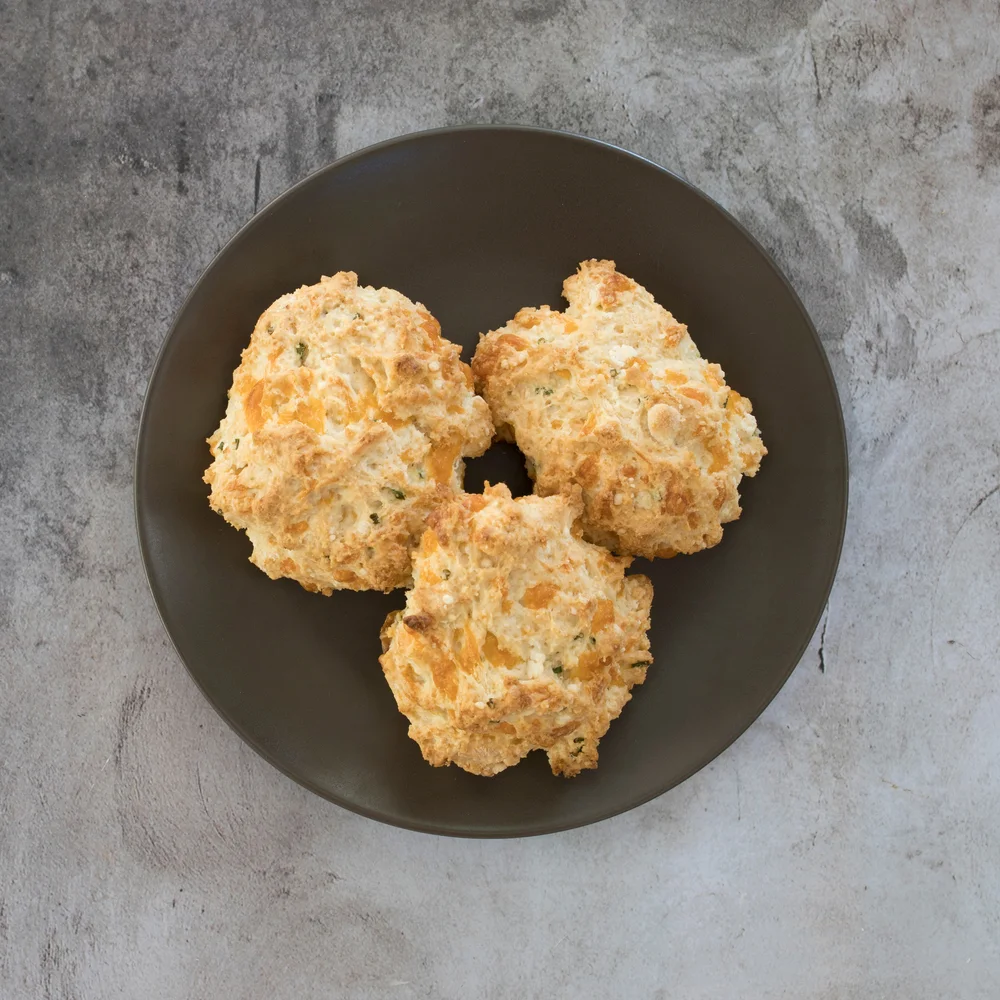
Baking with chives is a great way to add herbaceous zest to basic dishes, like bread or muffins. You don’t need much for the strong chive flavor to come through – a little goes a long way.
Quite literally spice up your morning biscuits with this scrumptious cheddar chive biscuit recipe made with buttermilk.
For the bread bakers out there, try this interesting cheddar and chive soda bread.
9. Chive Cheese
Cheese and chives go together like peanut butter and jelly. But, there is the occasional need for dairy-free options, either for yourself or for a guest. Make your own dairy-free cheese with chives for the next time the occasion arises.
You’ll need:
- 1 cup cashews (raw)
- 2 tablespoons of chopped chives
- 1 probiotic capsule or ½ a teaspoon of probiotic powder
- ¼ teaspoon salt
- 1 tablespoon dark miso
- ⅓ cup cooled, melted coconut oil
- 1 cup water
First, soak your cashews in water for about eight hours or overnight. Once their soaking is complete, blend them, with some of the soaking water, until smooth.
Pour the blend into a glass or bowl, add the probiotic capsule (or powder), and stir well. Then, cover your bowl or glass with a cloth and leave it to ferment. The longer it ferments, the stronger the flavors will be, but 8-12 hours should cut it.
Next, blend all the remaining ingredients (except the chives). When everything is blended, stir in your chives and viola – a dairy-free creamy cheese with chives.
10. Chives in Main Meals
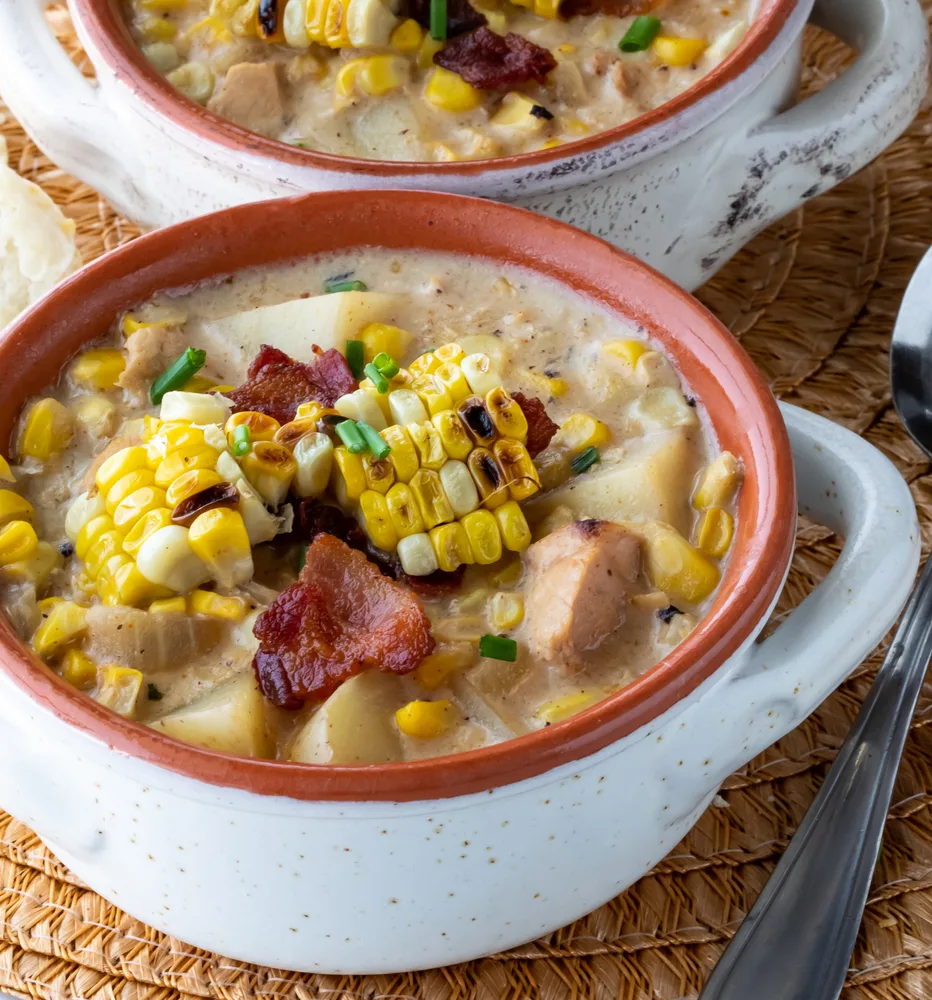
If you think you’re missing salt from your meal, you might be missing the tart oniony flavor of chives instead.
Chives and chicken are a match made in culinary heaven. This simple and tasty chicken and chive recipe from Life’s Ambrosia shows this pairing off perfectly.
Of course, those chive pasta dishes mentioned earlier also make great main meals. For meat lovers, try grilling a juicy steak with the delicious homemade chive butter.
Or, make your own chive and onion spice mix for an easy spice rub.
11. A Chive Breakfast
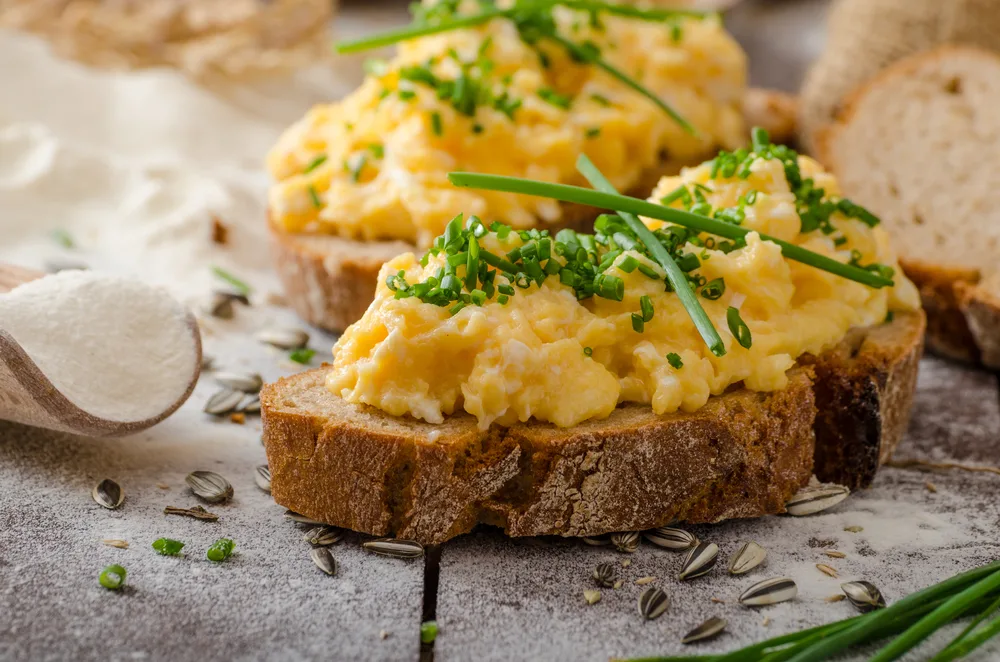
We’ve spoken about chives for dinner, for side dishes, and snacks. But each day starts with the most important meal – breakfast.
Chives pair wonderfully with many popular breakfast dishes.
Fry your omelet in chive butter for subtle hints of onion, or sprinkle freshly chopped chives over your scrambled eggs. Make a quick on-the-go breakfast with this unique bacon, cheese, and chive muffin recipe.
To kick up the culinary flair, try using chives to make unique devilled eggs.
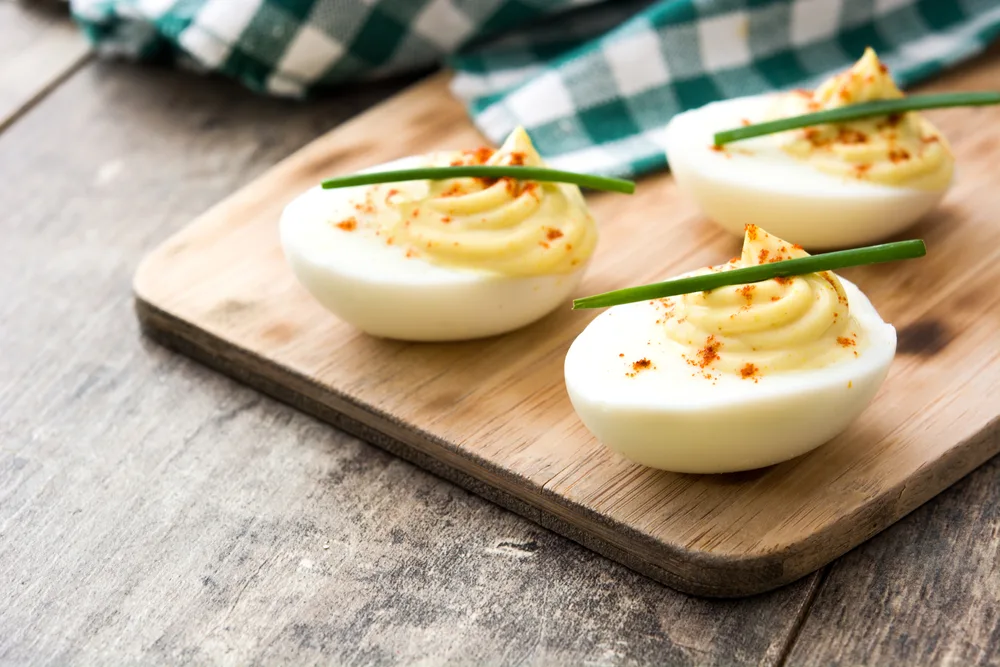
You need:
- 1 dozen peeled half-boiled eggs (sliced in half)
- 5 tablespoons of the mayonnaise of your choice
- 2 tablespoons of spicy mustard
- A dash of paprika
- 1 dozen finely chopped chive stems
- Salt and pepper to taste
First, keep about two or three chive stems aside, along with the paprika and the hard-boiled eggs. Using a fork, combine the rest of your ingredients together.
Next, carefully remove the hard-boiled yolks from the egg white and toss them into your mixing bowl. Mash the egg yolks with the mixture, making sure everything is combining well. If your mix is on the drier side, add some more mayonnaise or mustard.
When you’re happy with the flavors, spoon the mixture into the egg white halves and top with the leftover chives and paprika.
12. Chives For Cocktail Hour
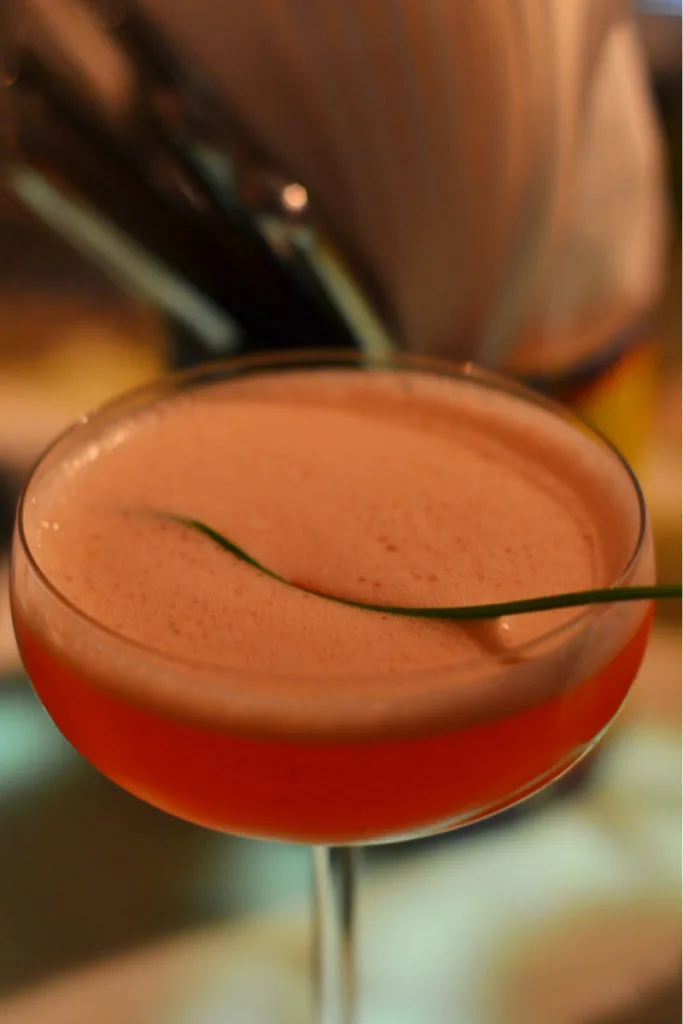
We may have covered every meal of the day, but the usefulness of chives doesn’t stop there. They are also useful during cocktail hour.
Chives add a savory flavor to your cocktails, especially gins. Follow this cool recipe for a Genepy Cricket with a twist.
Or, embody a true cocktail connoisseur by making your own chive blossom-infused gin.
You’ll need:
- 150ml of your favorite gin
- 1 chive blossom
Making the infused gin is incredibly easy. Just add your clean chive blossoms to a glass jar. Pour the gin over the blossom, seal the jar and shake it gently. Leave it to infuse for a few hours (the longer you leave it, the stronger the flavors will be). When you’re ready, strain your gin and add to your favorite cocktails.

Get the famous Rural Sprout newsletter delivered to your inbox.
Including Sunday musings from our editor, Tracey, as well as “What’s Up Wednesday” our roundup of what’s in season and new article updates and alerts.

